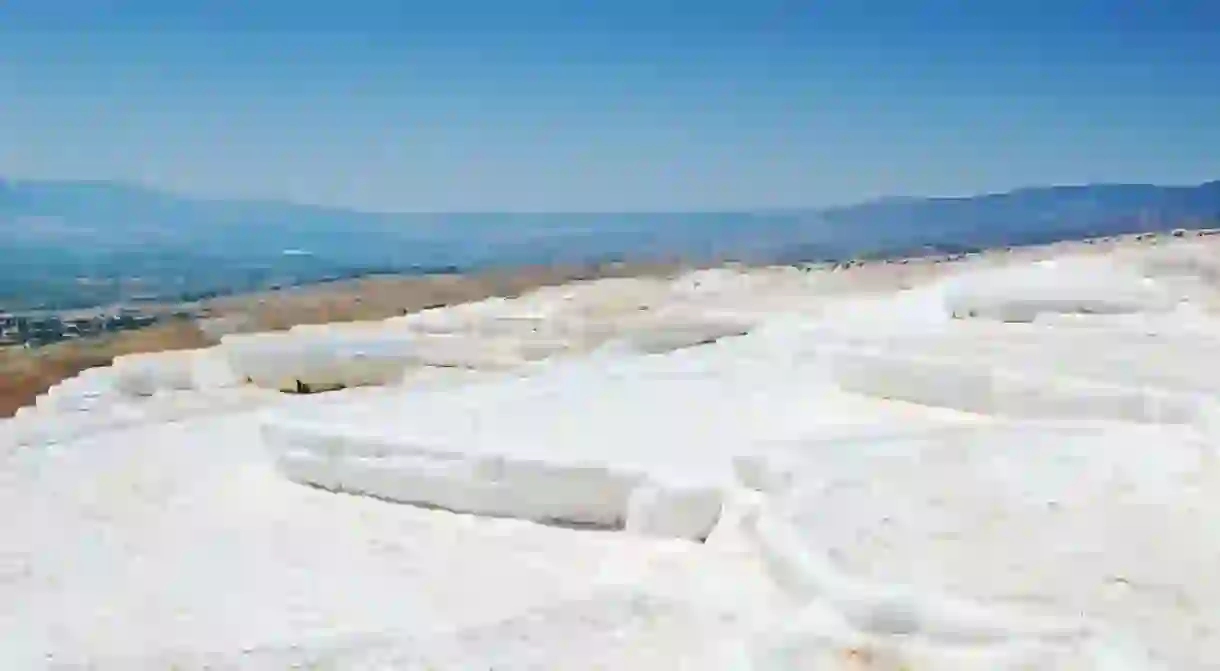These Natural Rock Pools in Turkey are Beyond Gorgeous

Pamukkale’s beautiful rock pools, are one of Turkey’s most important natural wonders that never fail to impress visitors, with snow-white terraces and nearby ancient city. So how did Pamukkale form and what should you know before you visit?
Translating to ‘White Castle,’ Pamukkale is a true spectacle of nature with pure white travertine terraces and warm pools that exude gorgeous muted blue tones. No matter what time of day, the landscape is stunning, changing in color, a wonderful example of nature’s extraordinary interactions and formations. The white travertine terraces were formed through the centuries from the buildup of water high in calcium carbonate, which flows from a thermal spring into the landscape.

At first soft, the buildup becomes hard over time and turns into travertine, for this reason visitors are advised to avoid certain areas where the terraces are still in the initial stages of formation. Geologically speaking, Pamukkale has around 17 hot water springs with temperatures that range between 35 and 100 degrees Celsius. After traveling around 320 meters from its source, the supersaturated calcium carbonate hot spring water is then deposited into the terraced landscape and over time the calcium carbonate, at first a soft jelly, hardens and becomes travertine.

Apart from Pamukkale’s natural terraced pools, the nearby Hellenistic spa town of Hierapolis is also another great reason to visit this particular spot in Turkey’s Denizli province. Founded at the end of the 2nd century BC, you can still visit the remains of Hierapolis’ Greco-Roman baths, temples, arch, and necropolis. It was here that the therapeutic effects of the hot springs were exploited through the construction and use of thermal installations such as large hot basins and swimming pools. Nowadays, visitors can still take a swim in the hot mineral waters of Hierapolis, a truly marvelous experience connecting past and present. Make sure to see one of the ancient town’s most striking sights, the Roman amphitheater, which could seat up to 12,000 people in its heyday.

Of course, with all this charm Pamukkale is an extremely popular tourist destination, which means that it can become a bit too crowded when you’re trying to take in the striking view. A tip for avoiding the crowds is to spend the night in the Pamukkale village and to visit the site in the early morning before the tourists even arrive (in the afternoon and later). Of course, visiting Pamukkale during winter (AKA off season) is also a great way to avoid tourists and to really bask in the beauty. However, because of the cold you won’t be able to enjoy taking a dip in one of the many pools. Either way, this UNESCO World Heritage Site is definitely worth a visit.














